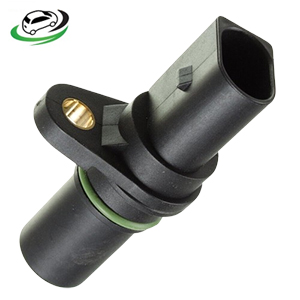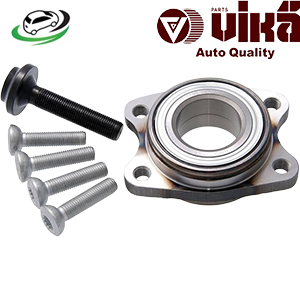-12%
Get Front Wheel Bearing Kit (Complete Hub) AUDI B5 S4/B6 A4/B7 A4/B7 RS4/B7 S4/C5 A6/D2 A8/RS6 / VW Passat B5 8E0498625B
Wheel bearing kits are essential components in a vehicle’s wheel assembly, playing a crucial role in ensuring smooth and safe driving. They support the weight of the vehicle, facilitate smooth wheel rotation, and contribute to overall vehicle performance and safety. This guide provides an in-depth look at wheel bearing kits, including their functions, construction, types, signs of wear, replacement procedures, and their importance in vehicle maintenance.
What is a Wheel Bearing Kit?
A wheel bearing kit consists of several components that work together to support the wheel and allow it to rotate smoothly. The primary function of a wheel bearing is to reduce friction between the wheel and the axle, ensuring that the wheel turns with minimal resistance. This is essential for smooth driving and vehicle stability.
Functions of Wheel Bearing Kits
Wheel bearing kits serve several critical functions in a vehicle:
- Load Support: Wheel bearings support the weight of the vehicle and transfer it from the wheel hub to the axle and chassis. This ensures that the vehicle remains stable and balanced during driving.
- Smooth Rotation: By reducing friction, wheel bearings enable the wheels to rotate smoothly and efficiently. This helps in maintaining a smooth and comfortable driving experience.
- Noise Reduction: Well-maintained wheel bearings help to minimize noise generated from the wheel assembly, contributing to a quieter cabin environment.
- Handling and Safety: Properly functioning wheel bearings ensure that the wheels remain aligned and balanced, which is crucial for safe handling and control of the vehicle.
- Durability: High-quality wheel bearings are designed to withstand the stresses and strains of driving, including load variations and road impacts. This contributes to the overall durability and longevity of the vehicle’s wheel assembly.
Components of a Wheel Bearing Kit
A typical wheel bearing kit includes several key components:
- Wheel Bearings: The central component of the kit, wheel bearings consist of inner and outer races, rolling elements (balls or rollers), and a cage. These components work together to reduce friction and support the wheel’s rotation.
- Hub Assembly: The hub assembly connects the wheel bearings to the wheel and axle. It includes the hub, which is the central part that the wheel is mounted on.
- Seals: Seals are used to protect the wheel bearings from dirt, water, and other contaminants. They help to ensure that the bearings remain lubricated and free from debris.
- Retainers: Retainers or circlips hold the wheel bearings in place within the hub assembly. They prevent the bearings from moving out of position and ensure proper alignment.
- Grease: Grease is used to lubricate the wheel bearings and reduce friction. Some kits come pre-lubricated, while others may require additional grease during installation.
Types of Wheel Bearing Kits
Wheel bearing kits come in various types, depending on the design and application:
- Ball Bearings: Ball bearings are the most common type and are used in many passenger vehicles. They consist of balls rolling between the inner and outer races, providing smooth rotation and load support.
- Roller Bearings: Roller bearings use cylindrical rollers instead of balls. They can handle heavier loads and are commonly used in trucks and heavy-duty vehicles.
- Angular Contact Bearings: These bearings are designed to handle both radial and axial loads. They are often used in applications where the bearing needs to support both types of forces, such as in high-speed or high-load situations.
- Hub Assemblies: Some wheel bearing kits include integrated hub assemblies, which combine the bearing and hub into a single unit. This type of kit simplifies installation and maintenance.
- Sealed Bearings: Sealed bearings come with built-in seals that protect the bearings from contaminants and reduce the need for regular maintenance. They are commonly used in modern vehicles for convenience and durability.
Signs of Worn or Failing Wheel Bearings
Over time, wheel bearings can wear out or become damaged, leading to various symptoms that affect vehicle performance and safety. Common signs of worn or failing wheel bearings include:
- Noise: A common sign of a failing wheel bearing is a whining, grinding, or growling noise coming from the wheel area. This noise is often more pronounced when driving at higher speeds or during turns.
- Vibration: Worn wheel bearings can cause noticeable vibrations or wobbling in the steering wheel or vehicle body. These vibrations are typically felt more strongly at certain speeds or when cornering.
- Play in the Wheel: If you notice excessive play or looseness in the wheel, it may indicate that the wheel bearings are worn or damaged. This play can be detected by rocking the wheel back and forth while the vehicle is lifted.
- Uneven Tire Wear: Failing wheel bearings can lead to misalignment or improper wheel positioning, resulting in uneven tire wear. This can cause premature tire degradation and reduce vehicle handling.
- Steering Issues: If the wheel bearings are worn, you may experience steering problems such as difficulty turning, steering pull, or a loose steering feel. These issues can affect vehicle control and safety.
- Leaking Grease: If you notice grease leaking from the wheel area, it may be a sign that the seals on the wheel bearings are failing. This can lead to contamination of the bearings and reduced performance.
Consequences of Ignoring Worn Wheel Bearings
Neglecting to address worn or failing wheel bearings can lead to several serious consequences:
- Safety Risks: Worn wheel bearings can affect vehicle handling and stability, increasing the risk of accidents. Poorly maintained bearings may lead to sudden wheel failure or loss of control, especially at high speeds or during cornering.
- Increased Repair Costs: Failing to replace worn wheel bearings promptly can lead to additional damage to other components, such as the hub assembly, suspension, or drivetrain. This can result in more costly repairs and extended downtime.
- Reduced Vehicle Performance: Worn bearings can cause vibrations, noise, and steering issues, negatively impacting the overall performance and comfort of the vehicle. This can lead to an unpleasant driving experience and decreased vehicle reliability.
- Premature Tire Wear: Improper wheel alignment or positioning caused by failing wheel bearings can lead to uneven tire wear. This can reduce tire lifespan and require more frequent replacements.
Replacing Wheel Bearing Kits
Replacing wheel bearing kits is a task that requires mechanical expertise and the right tools. The process can vary depending on the vehicle’s make and model, but generally involves the following steps:
- Raise the Vehicle: Use a jack to lift the vehicle and secure it with jack stands. This provides access to the wheel and wheel bearing assembly.
- Remove the Wheel: Remove the wheel to access the brake assembly and hub. This may require loosening lug nuts and using a lug wrench.
- Remove the Brake Components: Depending on the vehicle, you may need to remove the brake caliper and rotor to access the wheel bearings. This typically involves removing bolts or fasteners that secure the brake components.
- Remove the Old Wheel Bearings: Disconnect the wheel bearings from the hub assembly. This may require using a bearing puller or press to extract the old bearings from the hub.
- Install the New Wheel Bearings: Position the new wheel bearings and press them into place using the appropriate tools. Ensure that the bearings are properly aligned and seated within the hub assembly.
- Reassemble the Brake Components: Reattach the brake caliper and rotor, ensuring that all bolts and fasteners are tightened to the manufacturer’s specifications.
- Reinstall the Wheel: Place the wheel back onto the hub and secure it with the lug nuts. Tighten the lug nuts in a crisscross pattern to ensure even pressure.
- Lower the Vehicle: Carefully lower the vehicle and remove the jack stands. Test the vehicle by driving it at various speeds and listening for any unusual noises or vibrations.
Choosing the Right Wheel Bearing Kit
When selecting a wheel bearing kit, it’s important to choose the right type and quality for your vehicle:
- OEM Kits: Original Equipment Manufacturer (OEM) wheel bearing kits are designed specifically for your vehicle and offer the same performance and durability as the original parts.
- Aftermarket Kits: Aftermarket wheel bearing kits can vary in quality, so it’s important to choose a reputable brand. Some aftermarket kits may offer improved performance or durability, particularly those with enhanced sealing or lubrication features.
- Performance Kits: For performance vehicles or those with modified suspension, performance wheel bearing kits made from high-quality materials may be a good choice. These kits offer increased durability and precision but may come at a higher cost.
Follow us on Facebook for more parts.





